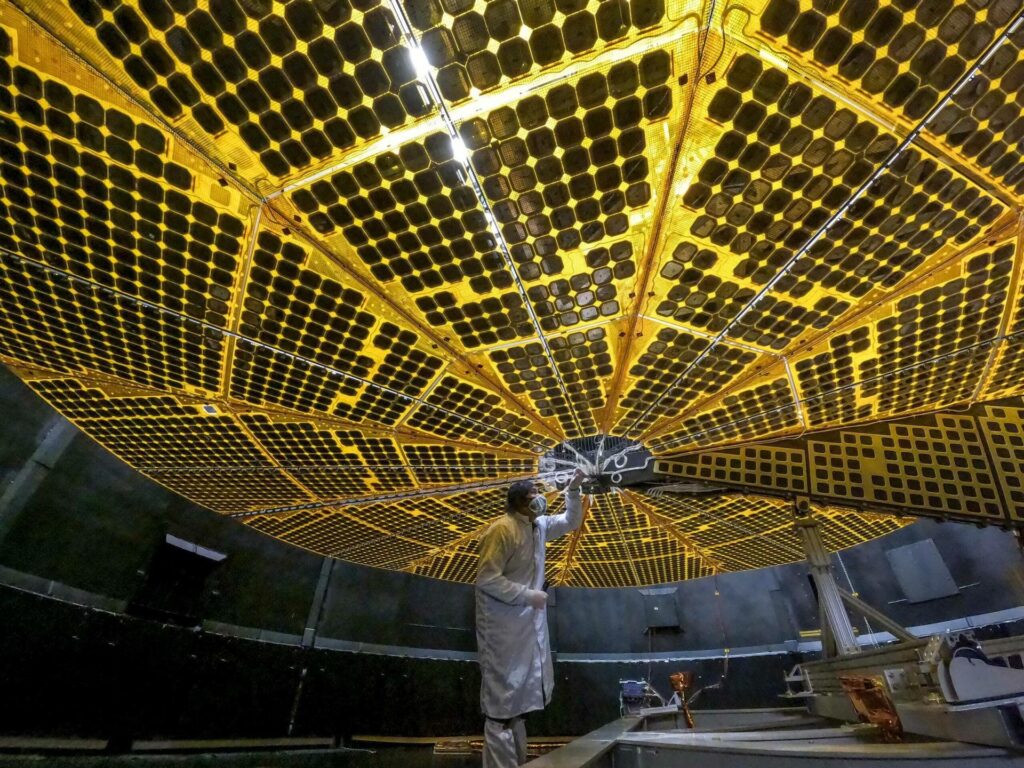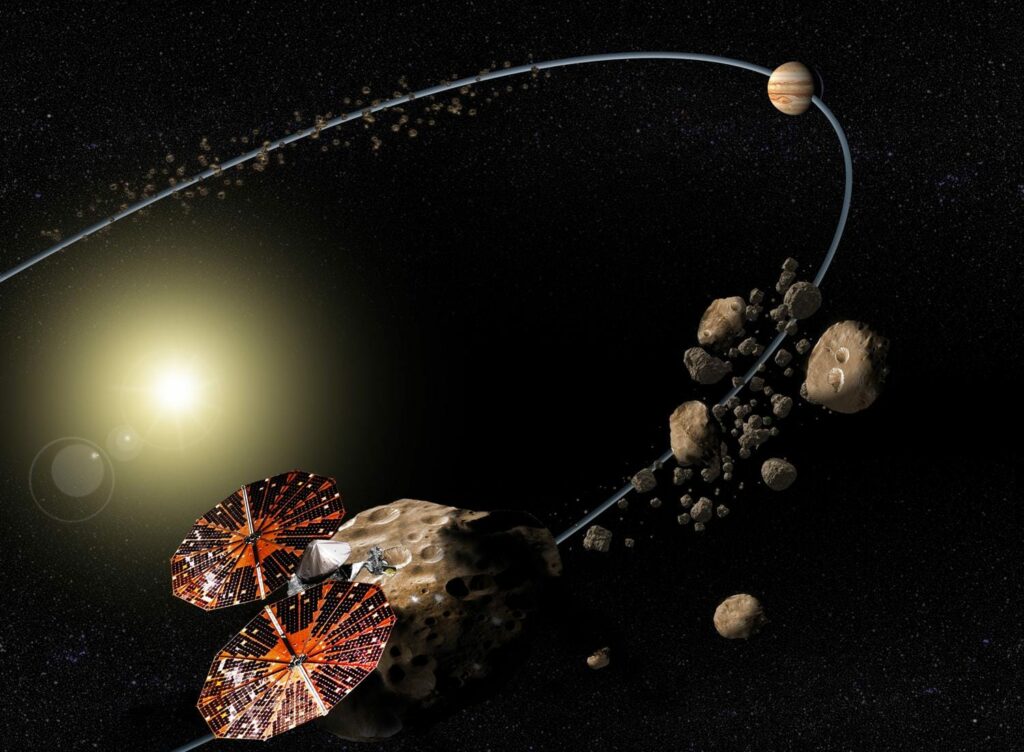As a result of several operations, NASA specialists managed to almost completely deploy the jammed solar array of the Lucy probe. The mission team is increasingly confident that they will be able to solve the task and stabilize the device.
Lucy Mission Challenges
The Lucy device receives energy from two round solar panels with a diameter of 7.3 m with a total surface area of over 80 m2. During the launch, they were in a folded state, their deployment began after the probe went into space and was carried out according to the fan principle.

Unfortunately, during the opening, one of the arrays could not snap. During the subsequent investigation, NASA engineers determined that it turned only 345°. The cause of the failure was the loss of tension in one of the cables of the array opening mechanism. According to engineers, from 50 to 100 cm of the cable remained unstrung.
Even with incomplete disclosure, Lucy solar arrays generate over 90% of the planned energy level, which is enough to fulfill all mission objectives. The main concerns of engineers are related to the fact that a non-latched array may affect the structural stability of the probe during upcoming maneuvers using the main engine. Therefore, they developed a plan for the full disclosure of the problematic segment using motors used for cable tension.
Deployment of the Lucy solar array
According to a recently published blog record of the mission, the operation to uncover the Lucy solar array lasted from May 6 to June 16. The analysis of telemetry showed that its deployment was brought to an indicator of 353° — 357°. In addition, now the solar array is subjected to much greater tension, which gives it greater stabilization.

Further attempts to deploy the array were paused due to the fact that Lucy entered the planned period of limited communication. Due to thermal limitations caused by the relative location of the Earth, the Sun and the probe, for several months the last one will not be able to communicate with our planet through a high-gain antenna. During this period, a low gain antenna will be used for communication.
Lucy will exit the limited communication mode after performing a gravity maneuver planned for October 16 in the vicinity of the Earth. After that, if necessary, the mission team will be able to continue until the antenna is deployed.
Follow us on Twitter to get the most interesting space news in time
https://twitter.com/ust_magazine
